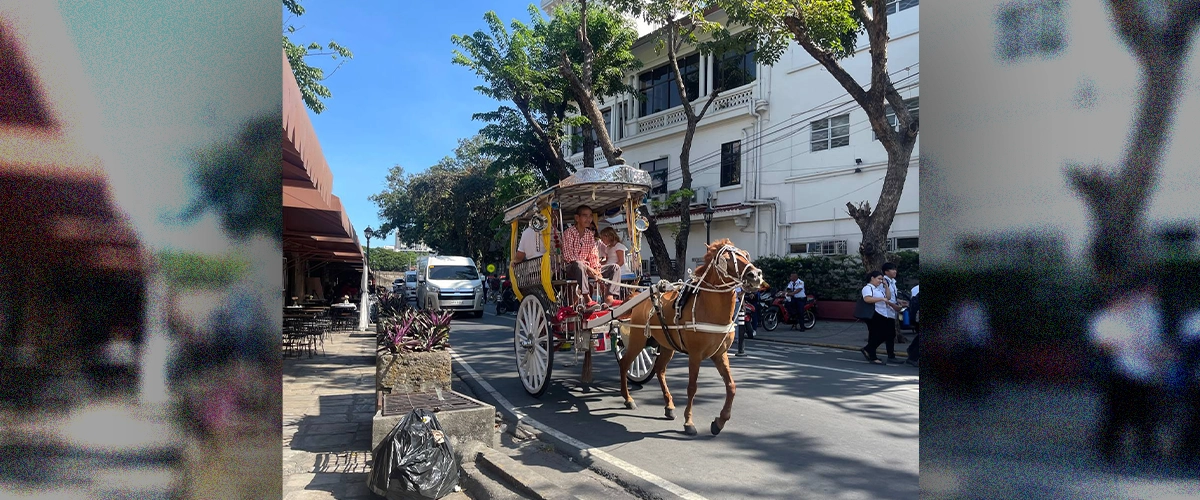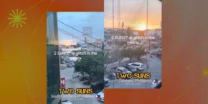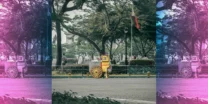INTRAMUROS, located in the center of Manila, is a historical and cultural treasure trove. In the middle of the modern city’s hustle and bustle, entering this protected enclave feels like stepping back in time.
And at the heart of Intramuros’s charm lies one of its most iconic symbols: the kalesa.
A horse-drawn carriage, known as a kalesa in Filipino, is one of the Philippines’ remaining icons and a part of its rich cultural legacy. It has been used to convey visitors to historical sites.
Kalesa was prominent in the old Manila, which was once a spectacular Spanish stronghold and colony in Manila’s oldest area, Intramuros, and offers a nostalgic trip inside its walled city.
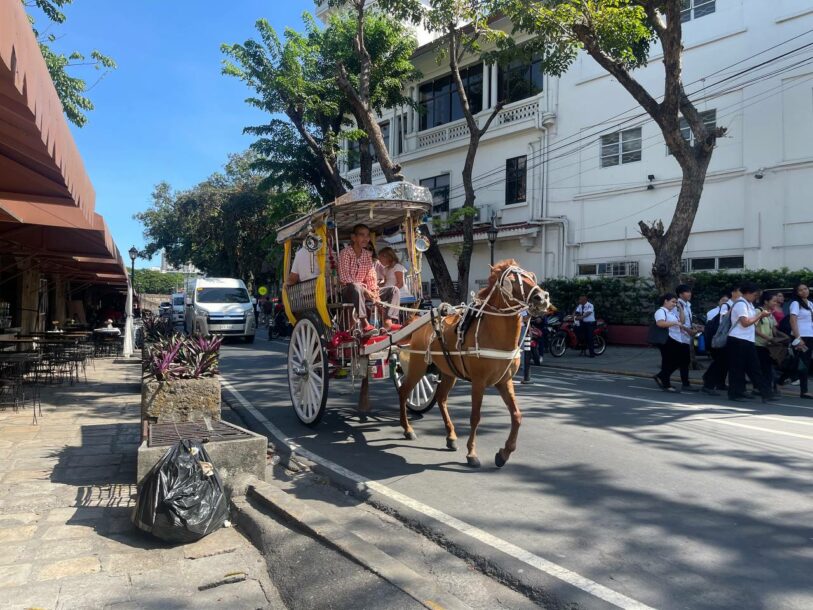
The restored walls and Spanish architectural buildings that line Intramuros’ streets transport visitors back in time. Schools, churches, Spanish government buildings, and historic Spanish homes are being renovated and brought back to life.
In an era when modern vehicles rule the roads, the kalesa stands out as a symbol of history and heritage, defying the tide of modernity.
Its continuous existence in Intramuros demonstrates the enduring legacy of Filipino culture, reminding us of the significance of conserving our roots in a rapidly changing world.
This summer, El Niño brought excessive heat to the country. It is affecting many livelihoods across the country, including the extremely iconic tourist transit, kalesa.
Extreme heat index
Just yesterday, April 16, the Philippines, specifically Metro Manila, logged one of the highest heat index of 42 degrees in NAIA, Pasay City. Meanwhile PAGASA warned the people within the area of Dagupan City, Pangasinan, about its dangerous heat index of 46 degrees Celsius.
On April 12, PAGASA published a press release of an official statement on creating extreme heat protocol, where they provide daily heat-related information, daily monitoring, and forecasts.
Earlier today, PAGASA posted their 5-Day Regional Weather Outlook on X (formerly Twitter).
5-DAY REGIONAL WEATHER OUTLOOK for #NCR_PRSD
— PAGASA-DOST (@dost_pagasa) April 16, 2024
Issued at: 8:00 AM, 17 April 2024
Valid Beginning: 8:00 AM today – 8:00 AM tomorrowhttps://t.co/ksz3I8yMDn pic.twitter.com/luZzxN31c5
Due to the extreme heat index experience within the country, schools and universities are forced to switched to synchronous online classes to prioritize the students’ health due to the extreme heat index.
Inside Intramuros, people are more likely to experience the heat because the area is surrounded by walls.
While riding the kalesa is one of the must-do that tourists cross out during their visit, do you ever wonder how the extreme heat affects the health and livelihoods of the horses and kutseros in Intramuros?
Effects of El Niño on livelihoods
Nestor Cruz, a 67-year-old kutsero in Intramuros, spoke with republicasia about his and his co-kutseros’ hardships amid this harsh scenario, including how kalesa tours languished this summer.
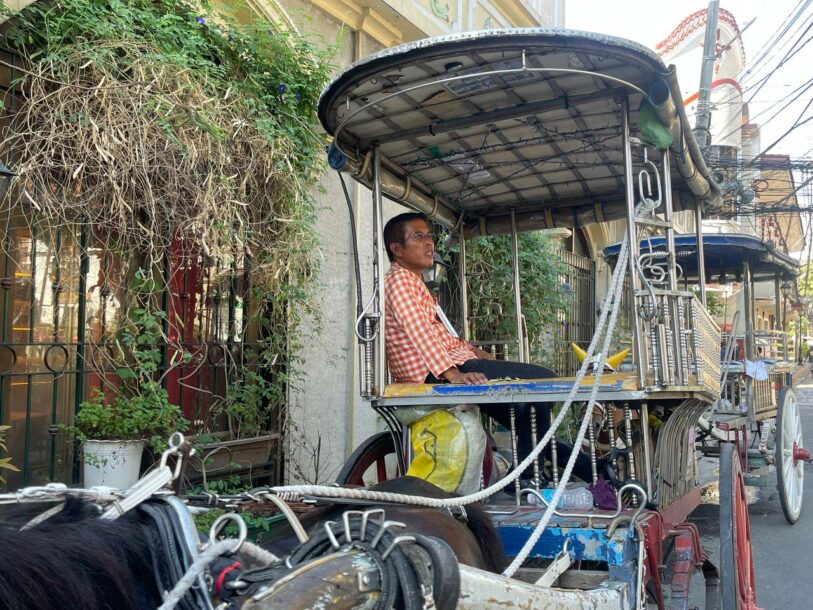
“Wala po gaanong pasahero kasi summer season. Halos lahat po ng customer nasa dagat, nags-swimming. At ang mga Pilipino rin, hindi gaanong nagla-lalabas ng bahay dahil takot din ma-heat stroke,” Cruz said.
The 67-year-old kutsero said that a normal kalesa tour guide of the walled city of Intramuros would cost roughly P1,000 and could accommodate at least six adults.
When the heat wasn’t as severe, he would have 3-4 sets of people from morning to dusk. However, it dropped by half during this year’s summer season.
“Sa isang araw, tatlo hanggang apat, hanggang gabi na ‘yun. Ngayon, isang pasahero lang, kanina pang umaga, kasi nga wala namang sumasakay gaano,” he shared.
Meanwhile, Artemio Marquez, who has been giving kalesa rides for nearly 21 years, said that the number of passengers remains quite consistent.
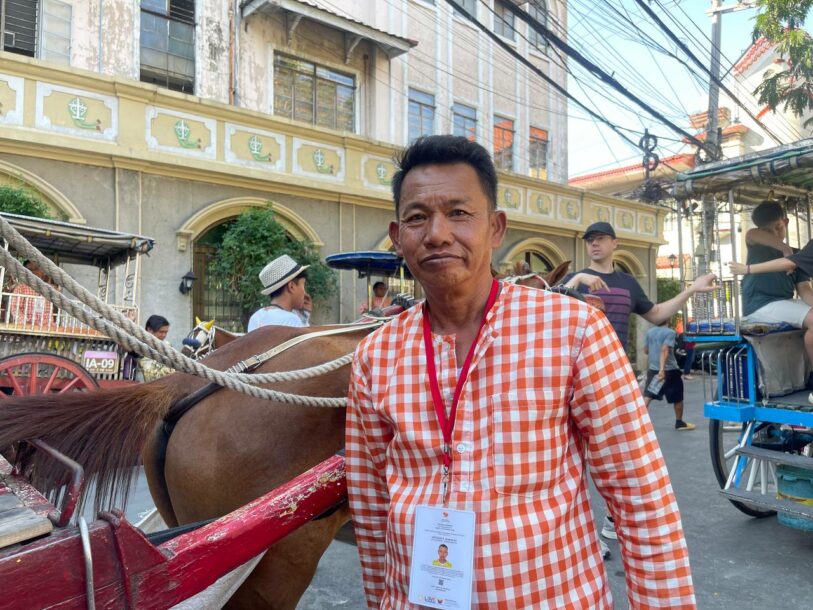
“Sa panahon na ‘to na mainit, syempre alam natin na konti lang ang namamasyal. Dahil ‘yung iba nasa outing at summer kasi diba, kailangan swimming-swimming,” the 54-year-old explained.
“Pero, hindi naman masyadong apektado dahil hindi naman lahat nasa outing, kahit papaano may pumupunta parin naman dito [Intramuros],” he added.
As some may say in Filipino, swertehan, some kutsero are fortunate to have a steady stream of customers daily, but others may have to wait half a day for another passenger for their kalesa tour.
Passenger figures may differ from one kutsero to another. The only certainty is that the horses must be considered: when the heat index rises day after day, the horses’ safety may be jeopardized.
Protecting the horses
Humans aren’t the only ones who are affected by the extreme heat in Manila as in Intramuros, the horses used for kalesa also suffer from the extreme temperature.
For the kutseros in Intramuros, looking after their horses well-being is a must, and when interviewed by republicasia, both Cruz and Marquez shared how they looked after their horses.
Whenever the kalesa is on standby, both Cruz and Marquez find a shaded area for their horses to rest. They also make sure not to let their horses stay in areas where the sunlight directly hits.
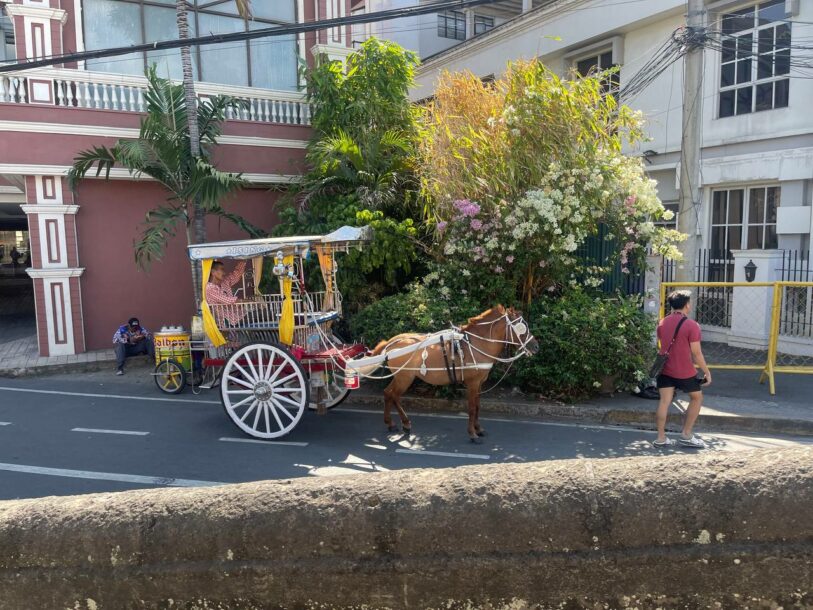
In terms of the shifts of kalesa, there isn’t really a cut-off when it comes to their schedule. Their shift still goes on from morning until night time but despite the long shift, the kutseros make sure that the horses get the amount of rest they need.
“Hindi naman namin sila pinagsasamantalahan, inaalalayan din namin sila,” said Artemio Marquez assured.
He shared how his horse gets to rest for three hours, but once they are able to pick up some passenger–they accept it because it’s their livelihood.
Cruz shared how his horse sometimes refused to eat due to the extreme weather condition. But despite that, he makes sure that the overall health of his horse is well taken care of.
“Sa kabayo, ingat din kami para hindi ma-dehydrate,” Cruz said. He added that he also give out the support that his horse needed especially when noticed the condition of his horse.
What to expect in Intramuros
The place is known as one of the tourist spots in Manila, and while getting a glimpse of what the city used to look like, there are some things that people should keep in mind before visiting the Walled City especially during the extreme heat temperature.
Keep in mind that since the city is located within the walls, being inside the area will feel warmer. Therefore, choosing clothes appropriate for the weather should be considered.
Sunscreen is a must to avoid sunburn on the skin. Lastly, don’t forget to regularly hydrate.
Support kalesas in Intramuros
Kalesa is more than just a form of transportation, it is a source of income for many Filipinos. Kutseros rely on these renowned carriages to make a living, transporting visitors and locals alike through the intricate streets of Intramuros.
The kutseros’ comprehensive knowledge of the area, combined with their welcoming manner, adds a layer of charm to the kalesa experience, transforming a simple trip into an unforgettable excursion.
Intramuros may be steeped in history but it is still a living and breathing community, and the kalesa is a vital part of that fabric, whether it’s a leisurely tour of the historic landmarks or a romantic evening ride beneath the stars.
This iconic figure provides a unique viewpoint on this timeless enclave, allowing tourists to appreciate its beauty and charm in ways that no other form of transit can. This emphasizes why we must maintain it.
Kalesa is more than a mode of transportation: it is a cultural icon, a sign of tradition, and a monument to the Filipino spirit’s resiliency.
The kalesa will hold a particular place in the hearts of those who visit Intramuros’ historic walls for as long as there are cobblestone streets to travel and stories to tell.

